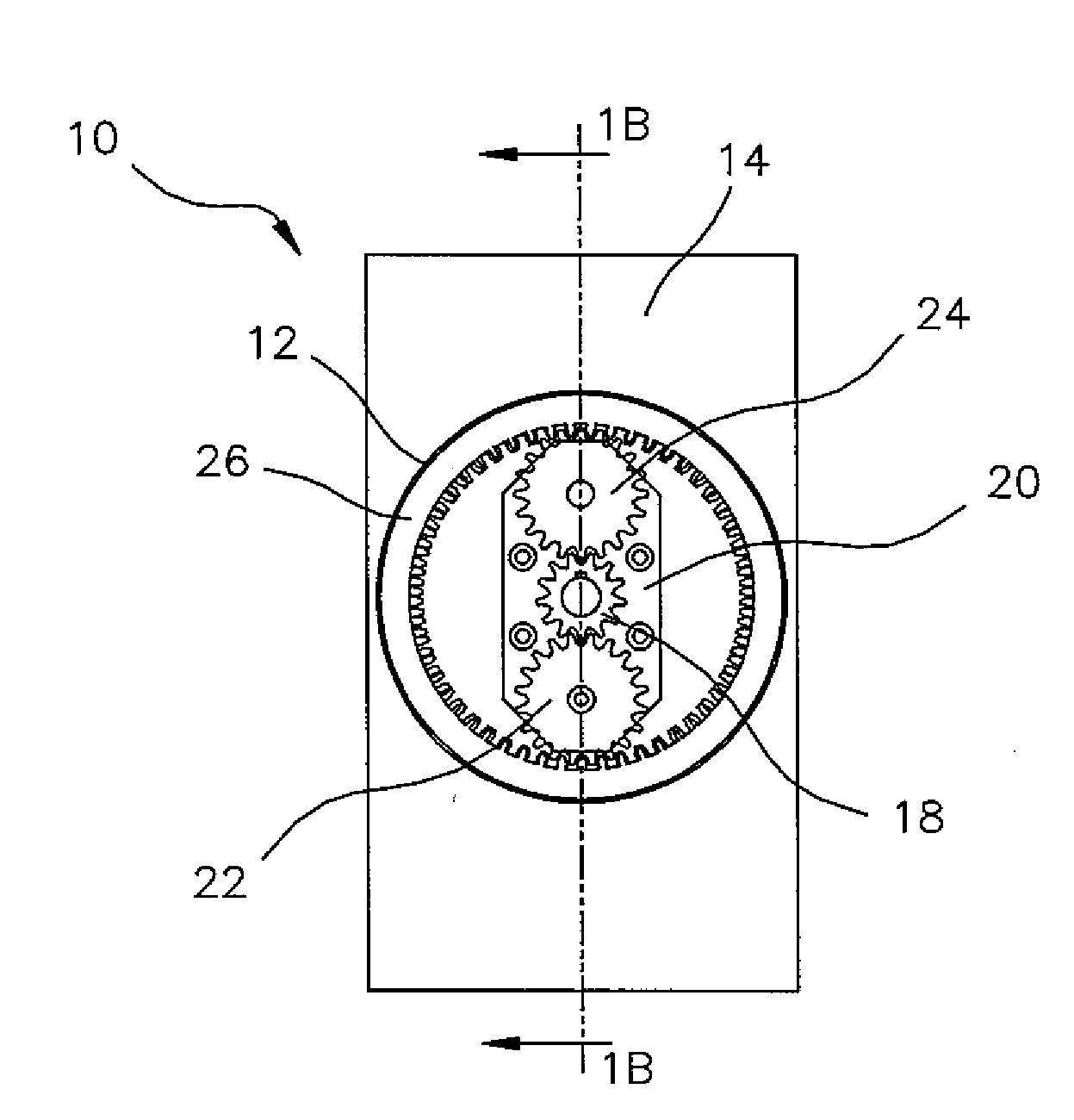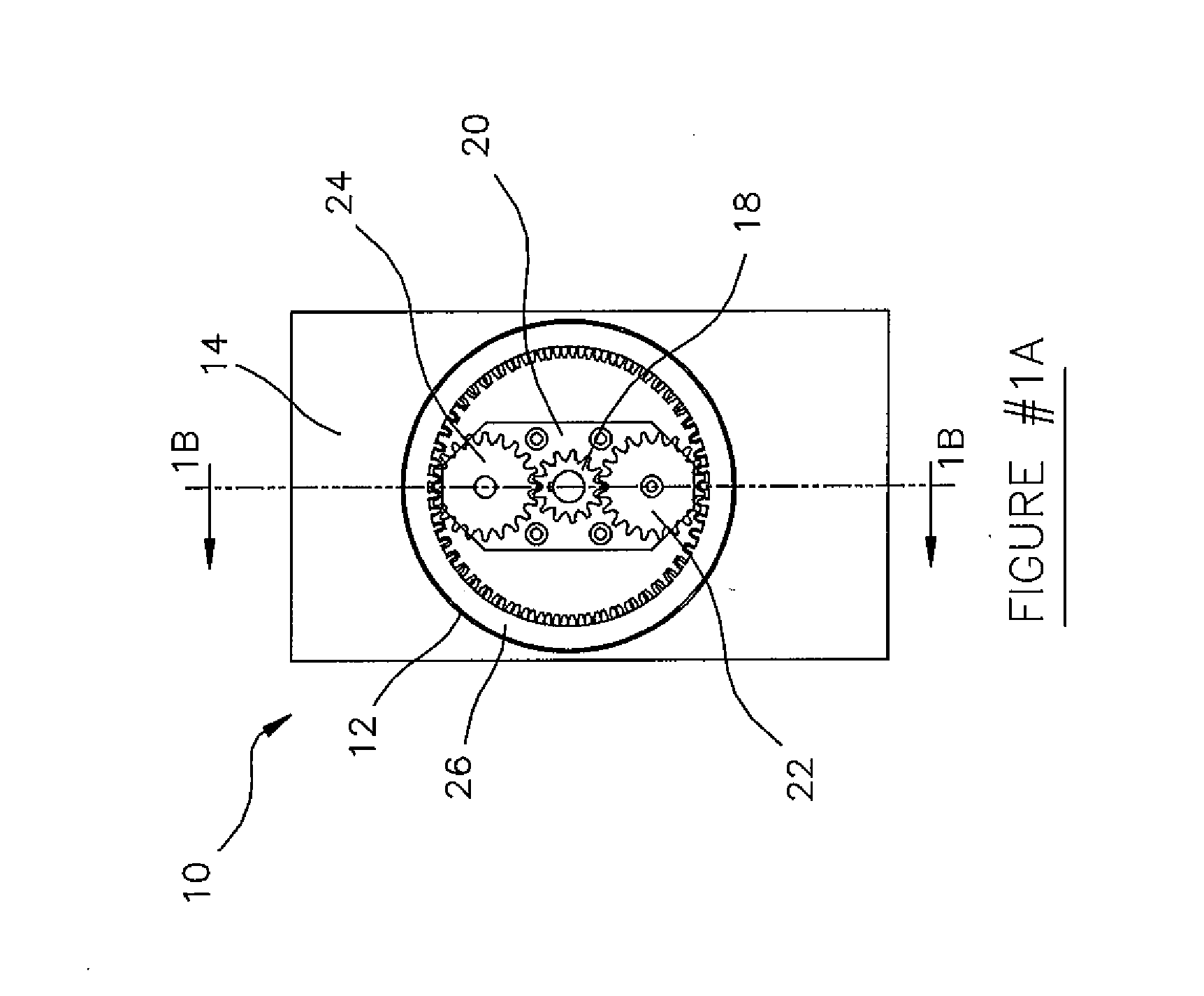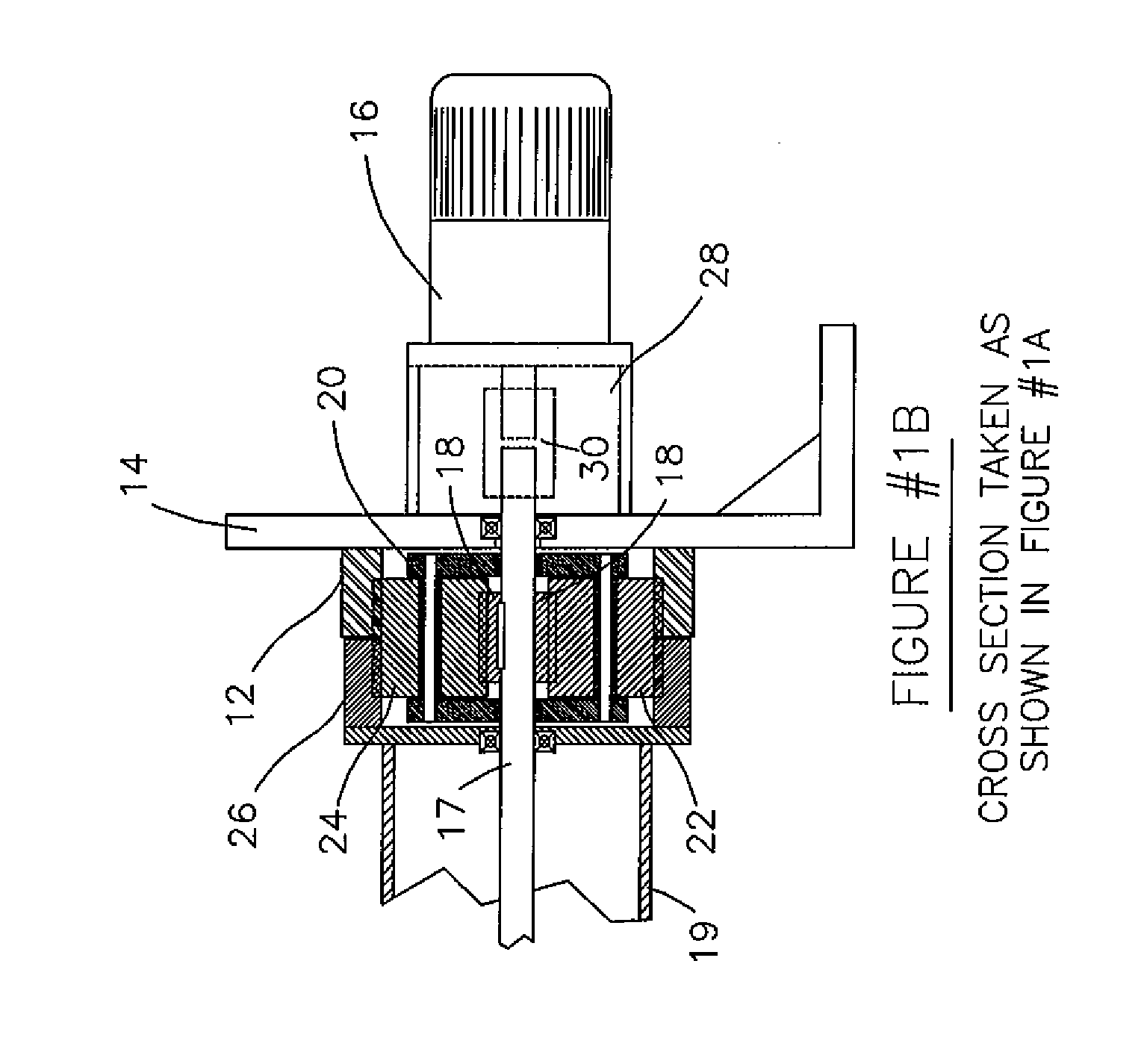Non-Backdrivable Gear System
a gear system and non-backdriving technology, applied in the direction of gearing details, gearing, mechanical equipment, etc., can solve the problems of unnecessarily complex a pair of pinned or bolted or welded gears, unreliable and reliable transmission, and the inability to manufacture separate gears in one pi
- Summary
- Abstract
- Description
- Claims
- Application Information
AI Technical Summary
Benefits of technology
Problems solved by technology
Method used
Image
Examples
example 1
Output Ring Gear System
A gear system was produced with the fixed ring 12 having 53 teeth and the output ring 26 having 51 teeth producing an approximate 25 to 1 gear ratio. The sun gear 18 was produced with 13 teeth and the planet gear 24 was produced with 20 teeth 24′ producing an additional ratio of 1.5 to 1 yielding an overall ratio of approximately 130 to 1. The design also allows for rotating the spider support frame 20 and allowing the sun gear 18 to idle. This shift yields an end ratio of 67 to 1 (input torque is applied directly to the spider frame 20 with sun gear 18 eliminated).
It is understood that the tooth numbers and ratios listed above are an example and are therefore not to be construed as limiting the invention. It will be appreciated to those skilled in the art that the gearing concept of Example 1 can be scaled up or down in size of gears or number of teeth or number of gears or gear configuration.
FIG. 1B shows motor 16 mounted on a housing 28 to accommodate a sha...
PUM
 Login to View More
Login to View More Abstract
Description
Claims
Application Information
 Login to View More
Login to View More - R&D
- Intellectual Property
- Life Sciences
- Materials
- Tech Scout
- Unparalleled Data Quality
- Higher Quality Content
- 60% Fewer Hallucinations
Browse by: Latest US Patents, China's latest patents, Technical Efficacy Thesaurus, Application Domain, Technology Topic, Popular Technical Reports.
© 2025 PatSnap. All rights reserved.Legal|Privacy policy|Modern Slavery Act Transparency Statement|Sitemap|About US| Contact US: help@patsnap.com



